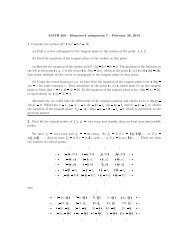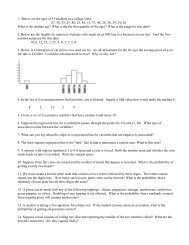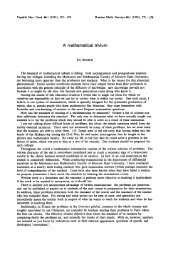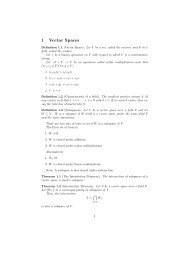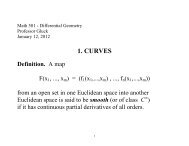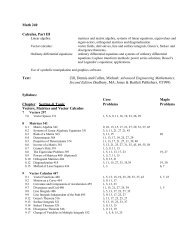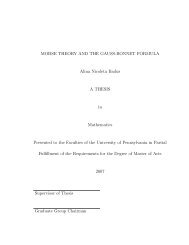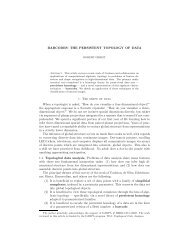Goppa Codes - Department of Mathematics
Goppa Codes - Department of Mathematics
Goppa Codes - Department of Mathematics
You also want an ePaper? Increase the reach of your titles
YUMPU automatically turns print PDFs into web optimized ePapers that Google loves.
<strong>Goppa</strong> <strong>Codes</strong> Key One Chung<br />
✬<br />
Definition. Let F be the homogenization <strong>of</strong> f . Then the projective curve <strong>of</strong> F is<br />
✫<br />
�Cf := {(X0 : Y0 : Z0) ∈ P 2 (k)|F (X0, Y0, Z0) = 0}.<br />
Example. f(x, y) = y − x 2 , g(x, y) = x − c. What is � Cf<br />
F (X, Y, Z) = Z 2 (Y/Z − (x/Z) 2 ) = Y Z − X 2<br />
G(X, Y, Z) = X − cZ<br />
When Z = 1, Y = X 2 and X = c. So, we have (c : c 2 : 1).<br />
When z = 0, X = 0 = X 2 . So, we have (0 : 1 : 0).<br />
Therefore, | � Cf<br />
� �Cg| = 2.<br />
� �Cg?<br />
Theorem (Bezout’s Theorem). If f, g ∈ k[x, y] are polynomials <strong>of</strong> degree d<br />
and e respectively, then Cf and Cg intersect in at most de points. Further, � Cf<br />
and � Cg intersect in exactly de points <strong>of</strong> P 2 (k), when points are counted with<br />
multiplicity.<br />
✩<br />
✪<br />
Page 16



